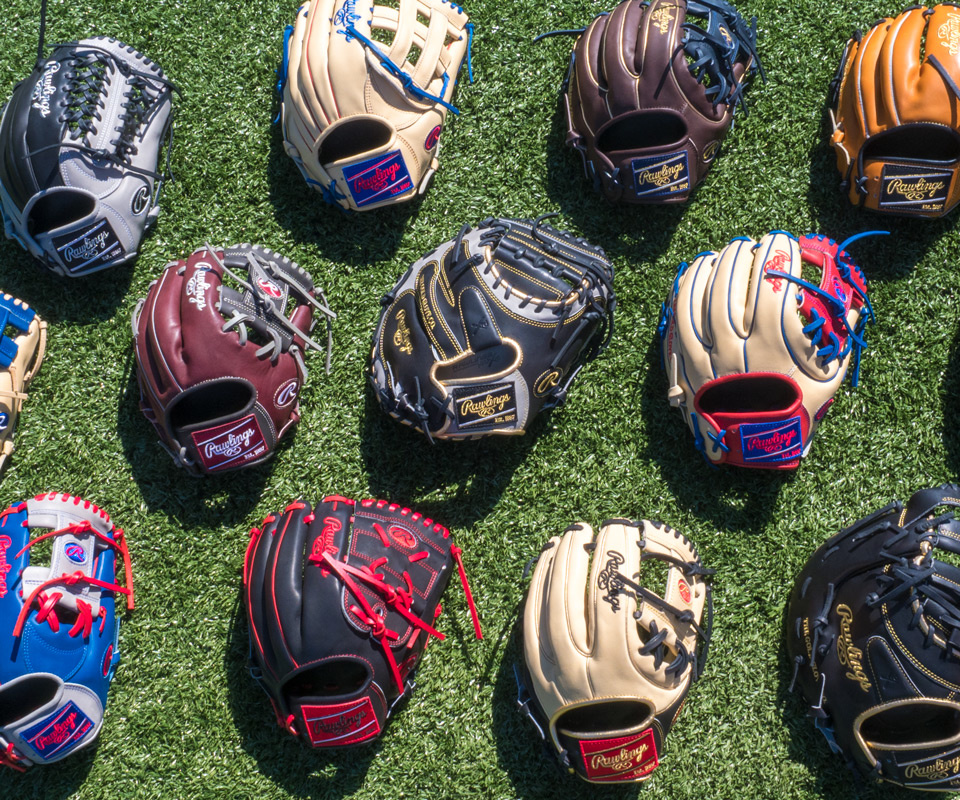Cart
You have no items in your shopping cart

An in-depth look at the legendary Heart of the Hide Rawlings Glove.
Rawlings has long been a leader among baseball equipment manufacturers in terms of
quality craftsmanship and innovation. The crown jewel of all baseball products (with
apologies to the wooden bat) will always be the genuine leather fielder’s glove.
At the urging of St-Louis pitcher Bill Doak during the 1920’s, Rawlings introduced the
first ever glove with webbing to connect the thumb to the forefinger. Before that,
players had to field the ball with the padded palm of a pocket-less glove.
However, it wasn’t until 3 decades later, in 1958, that Rawlings introduced its XPG
model. This classic is still undoubtedly the most revolutionary fielder’s glove ever
offered by the company. It introduced trademark Heart of the Hide leather, a process
by which only the top 5% of all steer hides available are used in the manufacturing of
this particular series of gloves.
The XPG was Rawlings’ response to Wilson’s A2000 model, which had a deeper pocket
and less padding, thus more supple than all previous gloves offered on the market.
Many of the innovations built into the XPG are still featured in today’s models.
Then in 1983, The American institution known as The Gold Glove Company hired the
man who would usher in a whole new level of innovation in glove design. For the last
35-plus years, Bob Clevenhagen has built gloves for the likes of Ozzie Smith, Alex
Rodriguez and many of today’s MLB superstars.
Modern gloves have evolved to specific lengths and pocket designs for different
positions on the field. As Clevenhagen explains: “For outfielders, the ball will be
funneled into the webbing. They are more apt to snag the ball up high in the web. An
infielder wants the ball where there's no problem finding it with his bare hand, not in
the webbing, but at the base of the fingers.”
FITTING A HEART OF THE HIDE GLOVE
Although they are well made and durable, Heart of the Hide gloves are not
recommended for everyone. They are too stiff and expensive for any salesperson to
suggest such a glove for the week-end recreational player or to any kid under 13 or 14
years old.
Which is why there is no youth Heart of the Hide model. The hand opening of an adult
glove is too wide for a kid’s hand and wrist, making it impossible to close properly or
handle correctly while fielding.
In terms of overall quality, Rawlings has a higher end line of playable gloves, the Pro
Preferred (they do offer a collector’s showpiece line, the Gold Glove collection, which
even the pros wouldn’t use in a game).
The Pro Preferred gloves feature a thicker hide with even more padding for better
protection and durability. As the name suggests, these gloves are aimed at the elite
player, the year-round competitor who has pro aspirations and wants a glove that will
last a whole season.
The Heart of the Hide line offers unmatched quality in the $300 to $400 range. It has
long been a staple of the Rawlings family of gloves and their most popular and
bestselling brand.
Once you know you are the right kind of player and can afford a Heart of the Hide glove,
the next step is choosing one that suits your position. Most of you recognize that
catcher’s and first basemen’s gloves have their built-in specific designs. But the other
positions (which all call for the conventional five-finger designs) also have their own
particularities.
Middle infielders (short-stop and second base) will usually prefer the smallest gloves
available, 11.25” or 11.5”. The shallow pocket and smaller web help with control and
transfer of the ball from glove to hand.
Third base isn’t called the hot corner for nothing. This position requires more margin for
error while fielding, since reaction time is diminished by the shorter distance from home
plate. An 11.75” to 12” glove is recommended.
In the outfield, range is prioritized over control. Therefore, the standard size of
outfielders’ gloves is 12.75”. Some pros even go bigger (13” and likely even more),
having their gloves customized. Of course, these trappers feature a much deeper
pocket and bigger web, for more forgiveness on those diving plays.
Finally, the pitcher is the fielder closest to the plate, so he also needs the benefits of a
bigger glove, even though he is an infielder. Depending on personal preference, hurlers
will play with gloves anywhere between 11.75” and 12.5” gloves.
The main difference you may notice between a third baseman’s glove and the pitcher’s
is in the type of webbing. Most fielders will play with a variety of see-through webs (I-
Web, H-Web, Trap-Eze web), but most pitchers will want to use a full-leather, opaque
web to hide the grip on the ball from the hitter.
For all the fitting information you need to buy your next glove, come visit our Baseball
Town experts in our Laval, St-Hubert or Ottawa location!
Comments
Be the first to comment...